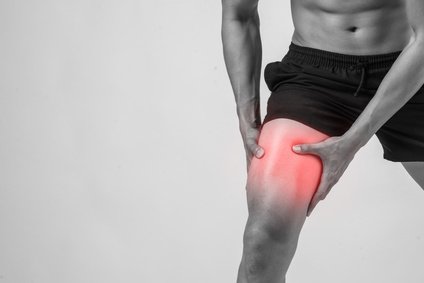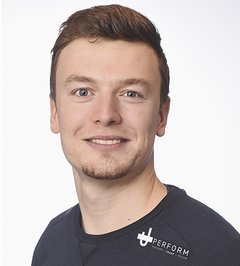Healthy Life
What is a muscle injury?
by Quentin Reginster

Muscle injury is damage to the muscle of various origins. It is one of the most common sports injuries.
1) In fact what is a muscle lesion?
Muscle injury is damage to the muscle of various origins. It is one of the most common sports injuries. It is an attack on the different structures that make up the muscle: muscle tissue, connective tissue, supporting tissue and myo-conjunctiva intimacy. The muscles most affected are the hamstrings, quadriceps, triceps surae and the hip muscles.
2) Is it serious? Are there different grades of severity? How long will it last ? How did I catch this?
Two broad categories of muscle damage can be noted:
A) Intrinsic Muscle Injury:
It is a self-injury that occurs either:
– When overstretching a muscle: “Over Stretching”:
– During an excessive eccentric contraction: “Eccentric time”
There are several grades of intrinsic muscle damage. They are also called myo-aponeurotic lesions. The severity and healing time of the latter vary according to the location and the degree of damage to the structure.
B) Extrinsic Injury:
It is an injury of external origin caused by a third party or an external force. It is common in team sports that occur during “Direct hit, crutches”:
Are there any clinical signs that allow me to assess the severity of my injury?
Yes, the more of the following signs are present, the more potentially serious your injury will be:
– Appearance of sharp and localized pain during my activity. (Stab)
– Pain / Inability to walk
– Appearance of a hematoma
– Pain when stretching the muscle
– Pain on muscle contraction
– Pain on palpation
3) Is surgery/medical procedures an option?
Surgery is sometimes necessary in some cases but remains rare. It is generally used in the event of a rupture.
The puncture is also often used to remove the intramuscular hematoma that may sometimes be present following your injury. This is done with the aim of speeding up your healing process.
The injection remains the subject of a lot of scientific work in the quest to optimize healing and reduce recurrence. To date, no high quality study has shown us a real benefit for its use in muscle damage.
4) Should I do medical imaging?
Your sports doctor will judge whether or not it seems useful to carry out one. It makes it possible to make an inventory of the lesion and to establish a theoretical deadline before the resumption of your activity, your sport. Ultrasound will most often be preferred for its availability and access.
5) What first aid should I perform?
➔ Put ice: With a cold pack, ice cubes + water in a bag, in a basin.
⚠Maximum 15 mins
⚠ Do not put the ice in direct contact with the skin!
⚠ Maximum once every two hours.
➔ Compress the injured area: with compression stockings, tape, thigh boots:
⚠ Do not compress too hard so as not to have a tourniquet effect.
⚠Avoid compressing during sleep.
➔ Lift the injured limb.
➔ Relative rest
⚠That means minimal movement!
⚠Avoid:
– put on heat
– Take anti-inflammatories
– Massage the area
– Stretch
– Do nothing more
6) How is rehabilitation going? :
Rehabilitation takes place in four phases:
a) Phase 1: acute / inflammatory: It begins as soon as your lesion and lasts in theory 72 hours. The goal in this phase will be to fight against hematoma / edema and pain.
How ? :
➔ Application of first aid for three days.
b) Phase 2: Proliferative
The purpose of this phase will be to drain the hematoma, to evacuate the damaged tissues, to launch the processes of reconstruction of the muscle fibers, to orient them correctly, to recreate binding proteins, to work the scar, …
How ? :
– Progressive eccentric muscular work
– Vascular work: bicycle, massage roller, …
– Fascia work, crocheting, stretching, tapping, …
– Start of the run, …
– Overall muscle maintenance, …
c) Phase 3: anaerobic
The goal of this phase is to get closer to the activity / sport while continuing and intensifying the strengthening of the injured muscle.
How ? :
– Specific muscular work
– Coordination work / change of direction
– Resumption of the sporting gesture
– Work on the lesional gesture
– Start of the sprint
– Jumping / Plyometrics, …
d) Phase 4: Return to activity/sport
You will always be advised to do at least a full week of training before returning to the competition / match.
➔ Note that throughout your rehabilitation, your therapist will use clinical and functional tests to progress and move from one phase to another.
6) Can I continue my activity / train?
The answer is no. By continuing your activity, you risk aggravating your injury and delaying the duration of your convalescence.
7) Will I regain my previous level?
The answer is yes ! Early care and diligence in your rehabilitation are essential elements in this objective.
8) What can I do to speed up the process and avoid recurrences?
To speed up the latter, it is important to take care of yourself quickly:
– Contact a sports doctor,
– Carry out first aid meticulously,
– To have an early rehabilitation,
– To be diligent in his rehabilitation once again.
It is also important to have a healthy life. Indeed, having a good sleep, a good diet / hydration are essential elements to recover in general and to rebuild your damaged structures.
Note that age and ethnicity can have an influence on your recovery.
9) How to prevent muscle damage? How to avoid recurrences?
Muscle injury is one of the injuries with the most recurrences. It is therefore necessary to take care of yourself quickly in order to have good healing from the start. Do not skip the steps and resume your activity too soon are to be avoided in order not to relapse.
Different strategies can and should be put in place to prevent lesions and avoid recurrences:
– A good warm-up adapted to the activity is essential.
– Specific strengthening of the muscles. (eccentric ++)
– Regular training and good workload management
– A good recovery / healthy life (Sleep, Food, hydration)
– Sheathing / proprioception / stability work


